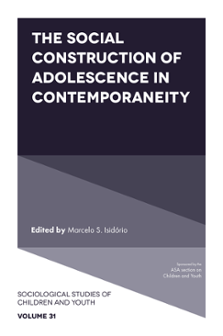
Index
The Social Construction of Adolescence in Contemporaneity
ISBN: 978-1-80117-449-7, eISBN: 978-1-80117-448-0
ISSN: 1537-4661
Publication date: 31 July 2023
Citation
(2023), "Index", Isidório, M.S. and Bass, L.E. (Ed.) The Social Construction of Adolescence in Contemporaneity (Sociological Studies of Children and Youth, Vol. 31), Emerald Publishing Limited, Leeds, pp. 161-166. https://doi.org/10.1108/S1537-466120230000031011
Publisher
:Emerald Publishing Limited
Copyright © 2023 Marcelo S. Isidório
INDEX
- Prelims
- Introduction: The Social Construction of Adolescence in Contemporaneity
- Chapter 1: Black Youth Agency in Hip-Hop Culture
- Chapter 2: Permanent Formative Training in Adolescence for Health Professionals
- Chapter 3: Political Participation of Children and Adolescents in Brazil: An Identity Study Based on the Narratives of Adolescent Activists
- Chapter 4: Adolescents and Pursuit of Being Perceived at the School
- Chapter 5: Linguistic Importance Through Bengali Fiction: The Present-day Adolescents' Engagement with Modern Bengali Literature
- Chapter 6: The Impact of Singapore's Mandatory Conscription on Adolescent Perception of Masculinities
- Chapter 7: Island Youth in Waiting: Adolescence, Waithood, and Future-making in the Faroe Islands
- Chapter 8: The Dialectic of Control in the Classroom: Agency and Exercise of Power Between Teachers and “Pre-adolescent” Students
- Chapter 9: Understanding Nuances of Menstrual Experiences of Adolescent Girls in Haryana, India
- Index